Updated June 2025
Click on the following sections to learn more about the Worker Health and Safety Awareness in 4 Steps Certificate and quiz.
- What Is The Worker Health And Safety Awareness In 4 Steps Certificate?
- What To Expect From The Worker Health and Safety Awareness In 4 Steps: Modules
- Worker Health And Safety In 4 Steps Certificate of Completion
- Worker Health And Safety Awareness In 4 Steps Certificate- FAQ
- More Extensive Health and Safety Training You Can Take
If you are looking for CPO-approved health and safety training, contact us.
Worker Health And Safety Awareness In 4 Steps Certificate
1. What Is It?

In order to get the Worker Health and Safety Awareness in 4 Steps certificate, workers must complete the Worker Health and Safety Awareness in 4 Steps online training and quiz. Many workplaces require their employees to complete this training.
This online training session and quiz help workers understand their rights and responsibilities at work. It outlines what the employer’s responsibilities are and provides everyday tips and facts about workplace safety. The training includes interactive quizzes, reading segments, and video segments.
This interactive, online video is posted on the Ontario Ministry of Labour, Immigration, Training and Skills Development’s website. The training tool consists of text, narration, and videos. It also includes test questions throughout the training. To see quiz tips and hints, click here!
2. What To Expect From The Worker Health and Safety Awareness In 4 Steps

Introduction:
When you open up the Worker Health and Safety Awareness in 4 Steps certificate test page, you will be presented with an introduction. The introduction provides you with information about the quiz. It also provides information about how you can navigate the quiz (for example, which buttons on the keyboard do what).
Modules:
There are four parts, or modules, to the safety training. These include:
“Get on Board” Module:
The first module in the course explains why you are important to workplace health and safety and where you fit in the internal responsibility system. It outlines your specific roles and responsibilities, and how they relate to the roles and responsibilities of supervisors and employers.
“Get In The Know” Module:
The second module talks about how you have the right to know about workplace hazards and how to work safely. It uses common hazards and WHMIS as examples. It will help you become more informed about workplace health and safety policies and procedures.
“Get Involved” Module:
The third module gives you examples of ways you can participate in health and safety in your workplace. This could include being a role model to your co-workers, becoming a health and safety representative or a joint health and safety committee member, and participating in training.
You can find out who your health and safety representative or joint health and safety committee members are by looking at the information posted in your workplace, or you can ask your supervisor or employer.
“Get More Help” Module:
In the fourth and final module, you find out that you can ask or go to see your supervisor or employer, health and safety representative or joint health and safety committee member when you need help with health and safety.
You will also learn that if you believe your health or safety is at risk, you can refuse unsafe work. Your employer cannot threaten, fire or dismiss you for exercising your health and safety rights or for asking your employer or supervisor to do what the Occupational Health and Safety Act says they must do.
This module also points out other places you can go to get more information or help about workplace health and safety, including the health and safety associations, the Ministry of Labour, Immigration, Training and Skills Development and the Workplace Safety and Insurance Board.
3. Worker Health And Safety In 4 Steps Certificate
Once you have completed the Worker Health and Safety Awareness in 4 Steps training program, you will then be given the opportunity to fill in your name and e-mail address.
Ensure you do not make any spelling mistakes!
A certificate of completion will be given to you and sent to your email.
The displayed image shows what your certificate of completion will look like.
Image Source: Ontario Ministry of Labour, Immigration, Training and Skills Development
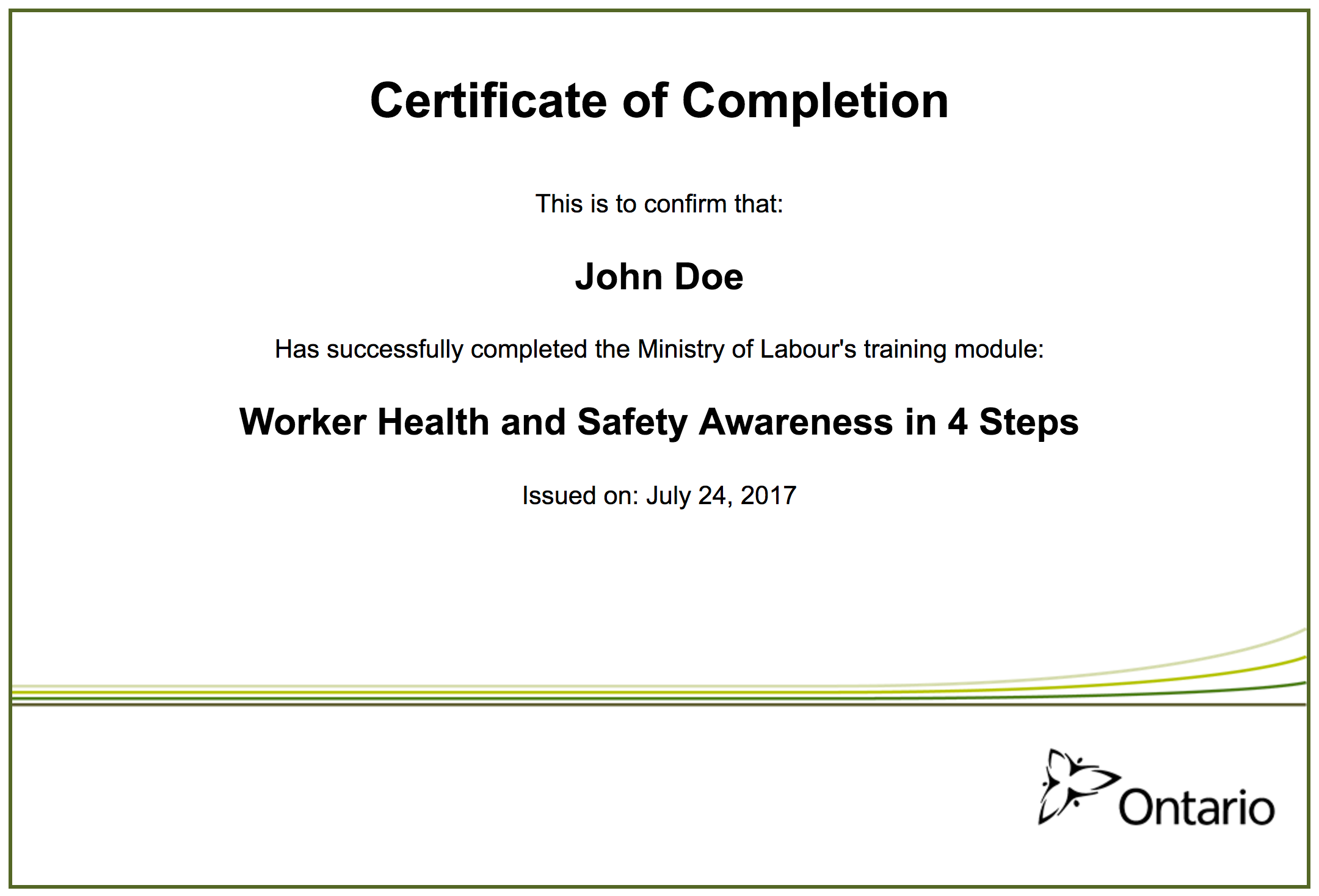
4. Worker Health And Safety Awareness In 4 Steps Certificate: FAQ

4. Worker Health And Safety Awareness In 4 Steps Certificate- FAQ
It is important for both employers and workers to understand the importance of safety training, such as the Worker Health and Safety Awareness in 4 Steps training course. This section provides the answers to some frequently asked questions so both workers and employers can stay safe at work!
Question: How Often Do I Need To Take This Training?
Answer: You Only Need to Take This Training Once.
There is no expiry for this basic training program. Workers do not have to retake awareness training if they switch employers, although proof of prior completion must be provided to the new employer. Some employers may choose to provide employees with refresher training after a few years. Even though new workers with certification are not required by law to retake training, the Ministry of Labour, Immigration, Training and Skills Development does state that:
“Although not required by the regulation, an employer may choose to have every new worker or supervisor complete an awareness program, even if the worker or supervisor has already completed this training with a previous employer.”
– Ministry of Labour, Immigration, Training and Skills Development General Questions and Answers
Question: Where Do I File My Certificate?
Answer: You Are Responsible for Keeping a Copy of Your Certificate; the Ministry of Labour, Immigration, Training and Skills Development Will Not Keep a Copy for You.
Once you have completed your online training, you will be emailed a copy of your certificate. Remember that the MLITSD does NOT keep a record of your training. This means that it is up to the individual worker to provide their employer with a copy of their certificate.
It is a good idea to print off two certificates and keep the original email. Provide your employer with one certificate and file your second certificate at home. A good way to keep track of certifications is to create a file specifically for work documents.
Question: Why Is My Certificate Important?
Answer: Basic health and safety awareness training is mandatory in Ontario
Health and Safety Awareness training became mandatory on July 1, 2014, when Ontario Regulation 297/13 came into force. Employers are allowed to use a basic awareness training program other than the Worker Health and Safety Awareness in 4 Steps program as long as it meets the minimum content requirements set out in the regulation.
However, the Worker Health and Safety Awareness in 4 Steps is a simple way to ensure workers and supervisors are trained by a program that meets all regulatory requirements. If employers do not have proof that workers completed this mandatory training, there could be legal action taken.
Question: Is The Worker’s Health and Safety In the 4 Steps Training Certificate Enough?
Answer: Certain workplaces, such as construction sites, require more than just basic safety training.
Basic awareness training provides employees with a general understanding and knowledge about rights, responsibilities, and how to find more information. However, many workplaces require more than basic training. The Ministry of Labour, Immigration, Training and Skills Development states:
“Basic awareness training does not replace or diminish other Occupational Health and Safety Act
(OHSA) training obligations.”
– Ministry of Labour, Immigration, Training and Skills Development General Questions and Answers
For example, construction workers who work at heights are required to complete an approved Working at Heights training course provided by an approved training provider.
Courses such as Working at Heights are industry-tailored courses, unlike the Worker Health and Safety in 4 Steps Training course. Basic awareness training is important, but it is also important for employers to know what workplace-specific training their workers may require.
5. More Extensive Health and Safety Training You Can Take

Worker Health And Safety Awareness In 4 Steps Certificate program is a very basic health and safety training program for your employees. For a more extensive course on this topic, sign up for ACUTE’s Worker Basic Occupational Health and Safety Awareness.
Acute can either hold this training at your facility or you can come to our training facility, whichever works best for you. Our comprehensive program fully meets the requirements of Ontario Regulation 297/13 – Occupational Health and Safety Awareness and Training Regulation under the Occupational Health and Safety Act (OHSA). To learn more and sign up for our course click here.
Additional Workplace Health and Safety Training Courses by ACUTE
There are many different types of workplace health and safety training courses. Only some are legislated, but they are very beneficial to take. Here are some of the more common workplace safety training courses. For a complete list of our courses, click here.
Part 1 Certification Basic Training for Joint Health and Safety Committee Members
This certification involves training in health and safety law, as well as the identification, assessment, and control of hazards. Standards for this training are set by the Ministry of Labour, Immigration, Training and Skills Development and the ministry also certifies JHSC members who complete approved training programs.

Working At Heights
ACUTE’s Working at Heights training program has been approved by the Chief Prevention Officer under the Ministry of Labour, Immigration, Training and Skills Development’s Working at Heights Training Program Standard and the Working at Heights Training Provider Standard. The ACUTE Working at Heights training provides theory and hands-on practical training and evaluation facilitated by highly skilled and competent instructors.
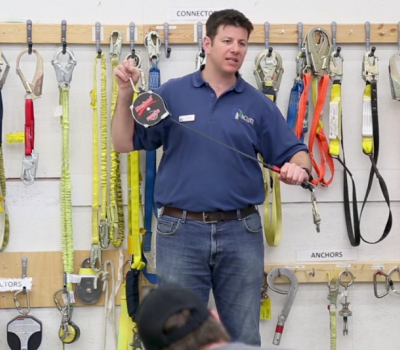
Confined Space Entry Awareness
This training program will familiarize a participant with the requirements of Ontario Regulation 632/05 – Confined Spaces. Furthermore, the training program is intended to provide entrants, attendants and competent persons with the skills and training required to recognize confined space entry risks and how to establish measured and corresponding controls. Participants will have the opportunity to become familiar with, inspect and use Confined Space Entry (CSE) access equipment and air quality instrumentation.

Confined Space Rescue
This training program builds on the content of the Confined Space Entry Awareness course to train participants on the safety considerations and how to safely perform rescues from confined spaces. This program has a very significant practical component that can be physically demanding for some. Participants will have the opportunity to extricate weighted mannequins from our confined space simulators.
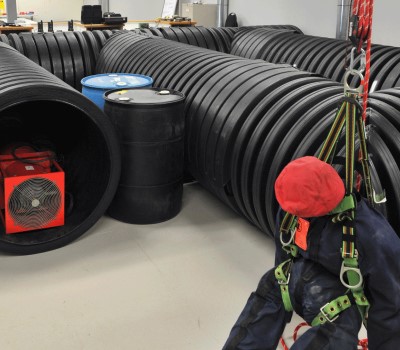
Elevating Work Platforms
Elevating Work Platforms (EWPs) such as scissor lifts and boom lifts can be safe solutions to working at height challenges. Unfortunately, lack of training, improper use and defective equipment has led to serious incidents involving workers in Ontario. The EWP course has been constructed to prepare operators for the safe use of EWPs. The theory module covers all classes of EWPs, while the practical module covers only the type of EWP used in the participant`s workplace.
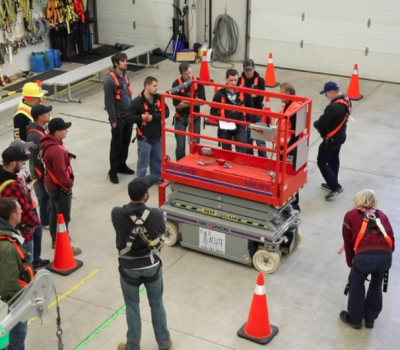
40 Hour HAZWOPER
This training program covers the requirements of the OSHA HAZWOPER standard (29CFR 1910.120). This standard sets out the minimum training requirements for site workers on hazardous waste sites, environmental remediation and emergency projects in the United States of America. The quality and comprehensive nature of this standard make it applicable and attractive to those employers and workers who work at Canadian workplaces that contain environmental contamination or hazardous materials.
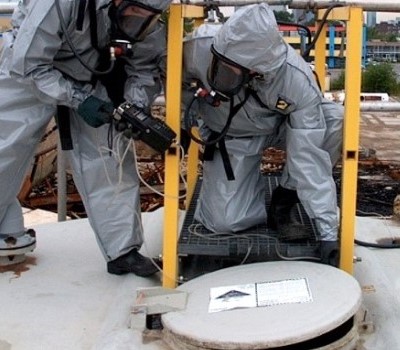
ACUTE – Ensuring Quality Training and Education
Some workplaces require more than online training sessions for their workers. The best way to keep everyone safe at work is by getting the best hands-on training for employees and ensuring that your trainer helps to build excellent team skills. ACUTE does more than help you comply with laws. Here are some ways that ACUTE goes beyond government compliance in Ontario health and safety training.
- Open Door Instructor-Student Partnership: ACUTE’s training services emphasize client participation. Staff foster relationships with clients and serve as a touchstone for advice moving forward.
- Serving Your Team and Industry: With a vast array of clients in the manufacturing, construction, health, academic, and government sectors, ACUTE brings the best safety practices from across the spectrum to your workplace.
- 100 Years Combined Experience: ACUTE provides a comprehensive health and safety training, on-site safety services, and consulting services. With over 100 years of combined experience, our staff offers more than theoretical or abstract ideas. ACUTE offers solutions.
- Track Record of Success: ACUTE has rated 4.9/5 stars on Google reviews, demonstrating a commitment to our clients, quality, and a passion for training.
Contact us today for quality training in your workplace or on-site at ACUTE’s proven training facilities!
Ready to learn more about workplace safety and training?
Hours of Operation
Monday – Friday: 8:00 a.m.–5:00 p.m.
Saturday – Sunday: Closed


